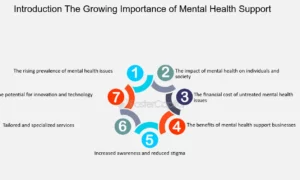Despite your best-laid plans, disaster can strike your business at any moment. And if you aren’t ready, you’ll end up losing a big amount of money. You can also lose your clients.
This is why implementing a business continuity plan is important.
Humans make for imperfect measures of protection for businesses in disasters. That’s why businesses tend to turn to business continuity solutions. They use it to solve these devastating problems.
To learn more about how to implement one that’ll work, keep reading. We covered different ways for you to do it.
1. Choosing a Platform That Will Support Program Management
You should choose business continuity solutions carefully. It is to ensure they can support program management. As technology evolves, it is important to select a platform with the necessary tools to facilitate the program.
When researching potential vendors, consider features like backup and recovery capabilities, scalability, and uptime. Redundancy is also important. A vendor should offer multiple solutions and resources in the event of a disaster.
CLDigital is one of the best examples of the platform. They are compliant with security and privacy regulations. They provide assistance in the implementation and application of the system.
2. Developing a Backup Plan
Best practices should start with an analysis of the environment. It is to identify hardware, software, networks, and data that should be part of the backup plan.
Following the initial assessment and a priority list should be formed and addressed. This priority list should determine which data and applications will require protection when a disaster occurs.
You should document and discuss this information at a high level. It is to ensure an understanding of the backup plan.
3. Staying Up-To-Date On Security Protocols
Ensure that all systems are up to date and patched regularly. Include any systems related to customer data. You should evaluate the business risks associated with any data or assets that you need to protect.
For instance, if customer data is being stored, security protocols such as two–factor authentication and data encryption should be considered. You should require all staff to use strong passwords and regularly change them.
Organizations must consider implementing ongoing training and drills. It is to ensure staff are aware of security protocols and can quickly respond to any data-breach incidents.
4. Testing Business Strategies
Business planning involves performing risk assessments, determining failure modes, and designing recovery mechanisms. Testing business continuity strategy should include tabletop exercises, data backups, and simulations.
Developers should test the solution from both the functional and infrastructure perspective. They must validate proper failover, data extraction, and system migration. Integrations with third-party services should also be tested for any possible disruptions.
Organizations should develop appropriate metrics. It is to evaluate the effectiveness of their strategies and ensure that they communicate effectively.
5. Assessing Risk
It is important to consider the level of risk and tolerance within the business environment. You should conduct a risk assessment. It is to identify and review areas of sensitivity and vulnerability.
It is also important to review general policies and procedures. You can ensure that employees and customers are provided with important information to weather disruptions in the event of an emergency.
Best Practices to Implement Business Continuity Solutions
Business continuity solutions are essential to protecting businesses against unforeseen circumstances. Implementing them according to best practices helps ensure that plans and processes run smoothly and efficiently.
Investing time and resources in these solutions will go a long way. It will help ensure companies remain resilient and secure.
Did you find this helpful and want to read more great content? Visit our latest blog posts now!



































